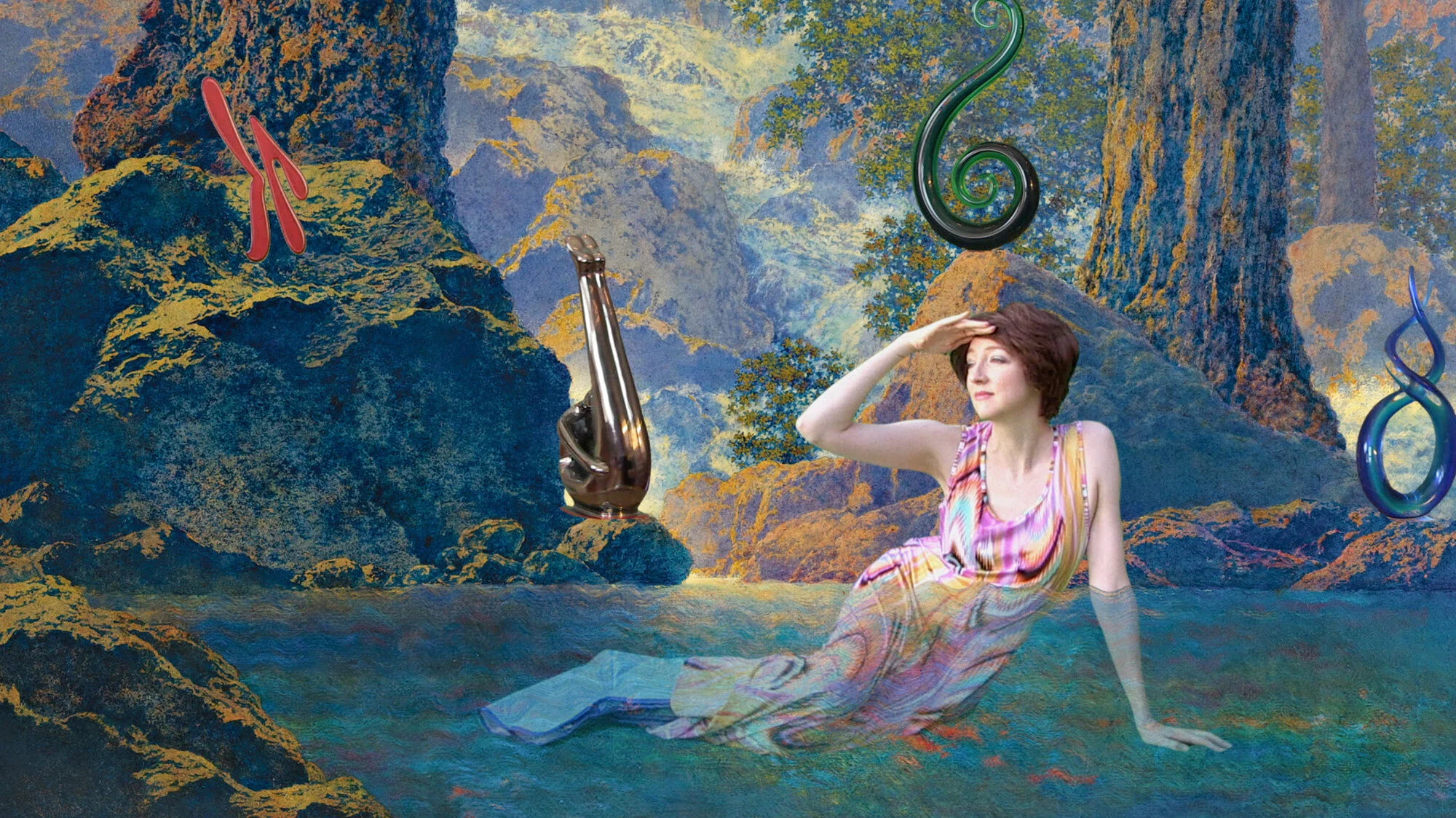Beyond the Body: Elisa Ortega Montilla
By Madeleine Eve Ignon
Elisa Ortega Montilla was born in Spain in 1985, only a decade after her country began to recover from thirty-nine years under fascist leader Francisco Franco. Throughout her childhood, the trauma from that period was rooted in those around her who had experienced it. Montilla grew up hearing stories from her grandmother about the Spanish Civil War; as a child, she was imbued with a stalwart sense of frugality and the instinct to reuse things when possible. Montilla has an old-world sensitivity towards and care for materials that make her work rich, layered and full of history.
At the root of Montilla’s work is the concept of trans, which offers our collective language and lived experience a way to express crossing, moving over/under/through. Montilla’s work skillfully communicates such themes and questions related to translation, transmutation, material transformation, transgenerational trauma, trans-ness as it relates to the body, her country of origin’s transition out of a dictatorship, and even her trans-Atlantic move to the United States in 2013 as a result of Spain’s dire economic crisis.
Though Montilla’s hybrid sculptures are reflective of her cultural history, she deftly updates the visual vernacular, transforming reclaimed wood and undergarments into skillfully carved biomorphic shapes and manipulating fabric into textural, colorful gestures. Found materials are elemental to her practice, but she lets the materials dictate and inspire rather than limit the works she produces.
Elisa Ortega Montilla, Asimetría, reclaimed plywood and undergarments with embroidered flower
While her sculptures are smoothed, sanded and waxed with care and precision – creating skin-line surfaces – Montilla also embraces the natural knots, contours and burls of the wood. She carves wood as if it were clay, creating familiar yet unidentifiable shapes that allude to the body and all its inherent and possible abstractions.
In Objectifying, Montilla’s 2021 exhibition at San Luis Obispo Museum of Art (SLOMA) the work is given an intimate viewing experience. The gallery space doesn’t offer the high ceilings of her previous large-scale installations, but the work is strengthened by close proximity to the viewer’s body and dramatic cast shadows. Amorfa (2020) confronts the viewer with a powerful active pose, like a prehistoric form caught mid-stride, in a state of transmutation. Anatomías (2020) is an erotically-charged hanging mobile – a fiercely feminist, craft-centric response to the hard, graphic edges of Alexander Calder. The suspended pieces move in and out of abstraction, offering playful glimpses into bondage, bones and viscera that interact to form undulating, poetic relationships.
Mollera (2019), a limbless, torso-like form, sits on a hand-made plinth with small drawers that emerge out of it, spilling out cheap, garish pairs of women’s underwear. Montilla references department store underwear displays, the politics and consequences of fast fashion, and our culture’s flattened, heteronormative notions of “sexiness” as it relates to the female body.
Montilla’s pieces imagine bodies in all their illogical, and imaginary forms, but also focus on what is beyond the body. The works engage with the boundlessness of the body in our imaginaries. Seen another way, the pieces could represent the body’s earliest state – that “pupa” stage of life where anything is possible. Thigh Gap (2019) feels like a bulbous, pre-fetal organism, held by its middle in a pair of ruched black underwear with glittery trim and embossed with an embroidered blue flower as if the wood is actual flesh. Many of the works are hung and suspended in gravity-defying poses, but none feel in danger of weakening or straining; the forceful, grounded nature of the wood and hardware places them firmly in space. The sculptures assert their presence and unabashedly claim their existence.
Elisa Ortega Montilla, Mollera, pine
Elisa Ortega Montilla, Gemelos, pine on steel
Clips (2020), installed in a grid, is made up of sixteen pieces that each reference a different kind of undergarment clasp, in the bright jewel tones of a Crayola box. The work moves far beyond the scale of the body, literally blowing up and emphasizing the discomfort of the garments that Montilla tears apart and manipulates.
One of Montilla’s strongest pieces is Chocheras (2021), which operates with the same scale-busting energy and boldness of Clips. The term chochera is a take on the Spanish slang word for vagina, chocho. A friend of Montilla’s coined the term to refer to the strip of cloth that goes between one’s legs on the style of underwear usually identified with femme bodies. Montilla wrote of the piece, “Several years ago, a Spanish friend in Madrid told me how her underwear had fallen from a clothesline onto her building’s communal patio. When she went down to retrieve them, they had disappeared. The next day she found them in her mailbox, but the center fabric piece under the crotch had been cut out. She explained, upset yet laughing, ‘¡Cortaron mi chochera!’” Montilla has not previously so directly confronted this element of working with repurposed underwear, and it is exciting to see the work engage with that potent charge. Through daring color, scale and texture, Chocheras vividly makes the private public.
Through subject matter, meaning and material sensibility, Montilla’s work is in direct dialogue with a long feminist art tradition that includes Post-War Euro-American visionary makers Eva Hesse and Louise Bourgeois, as well as the Feminist Art Movement of the 60s and 70s that valued alternative materials and a broader definition of art that forefronted womens’ perspectives and experiences. Montilla’s work is similarly committed to its own craft, language, tactility and political messages, while remaining firmly and wonderfully abstract, surprising and inventive.
Elisa Ortega Montilla, Objectifying, Installation view, San Luis Obispo Museum of Art









